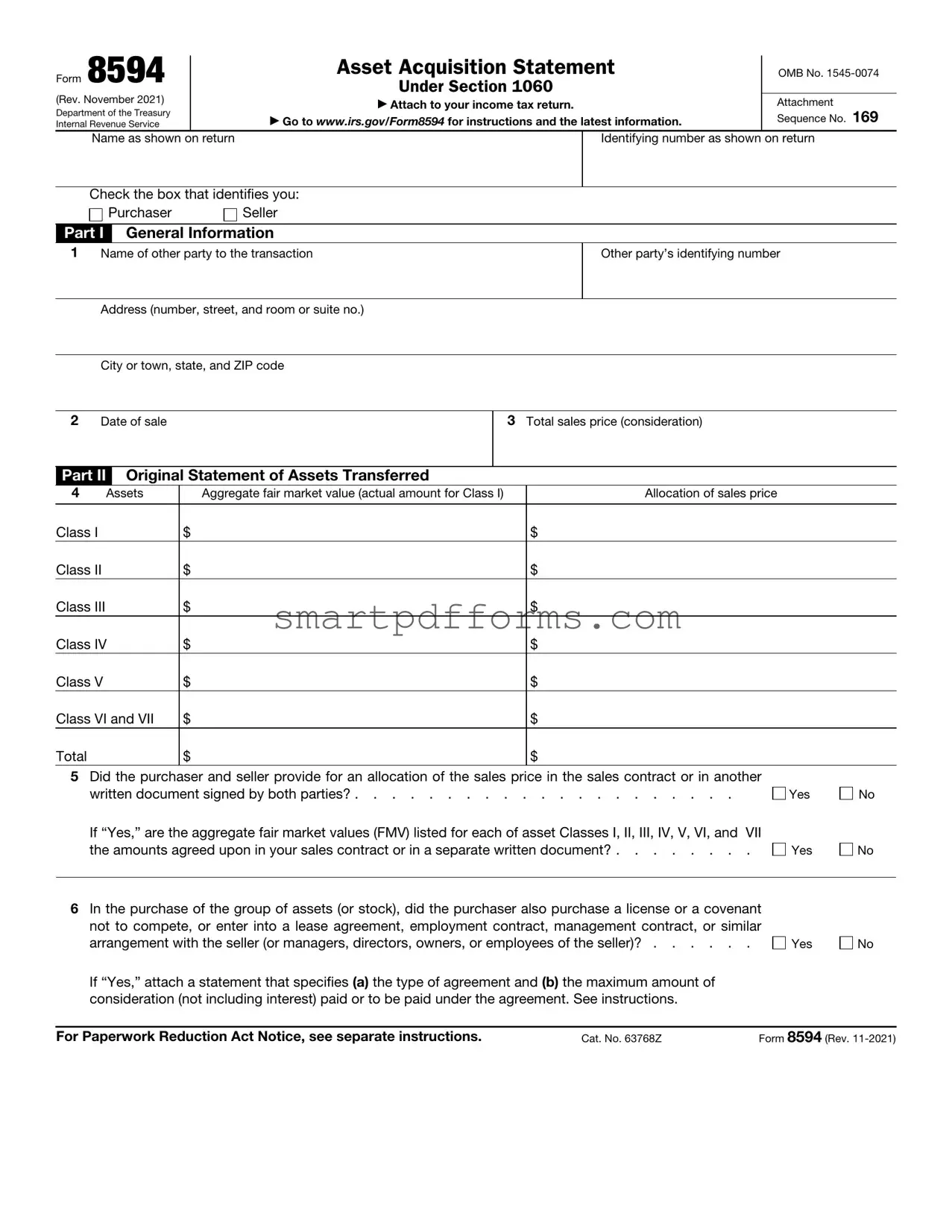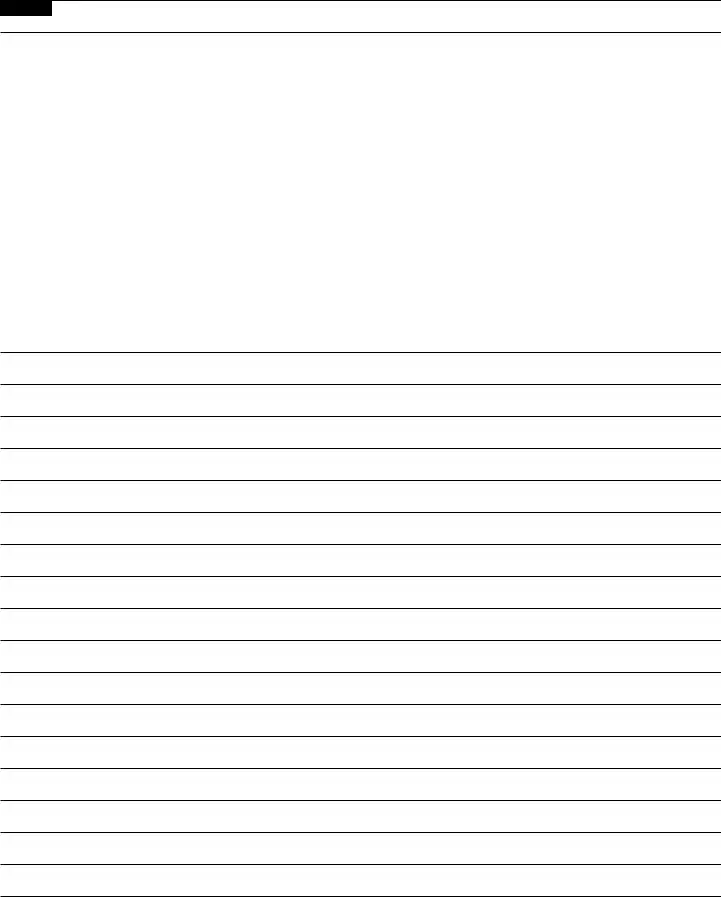When parties engage in the purchase and sale of a business, the Form 8594, Asset Acquisition Statement, plays a pivotal role in the process, providing a structured format for declaring the sale to the Internal Revenue Service (IRS). This form, updated in November 2021, is a requirement under Section 1060 of the Internal Revenue Code (IRC), designed to ensure both the purchaser and seller accurately report the financial details of the transaction. Key aspects include identifying both parties, detailing the date of sale, and allocating the total sales price among various asset classes, from tangible goods to intangible assets like licenses and non-compete agreements. Moreover, the form asks whether the purchaser and seller agreed on the asset sale price allocation in their sales contract or another signed document, ensuring clarity and agreement on the value of assets transferred. Form 8594 must be attached to the income tax returns of both the buyer and seller, making it a critical document for correctly finalizing the asset acquisition process. To assist filers, the Department of the Treasury also provides instructions and updates on their official website, making compliance a more straightforward task. Beyond its primary function, the form allows for amendments through Part III, accommodating for adjustments in consideration post-transaction, reflecting the dynamic nature of business sales. The introduction of Form 8594 underscores the IRS's commitment to transparency and accuracy in financial reporting, promoting fair and clear transactions in the business world.


